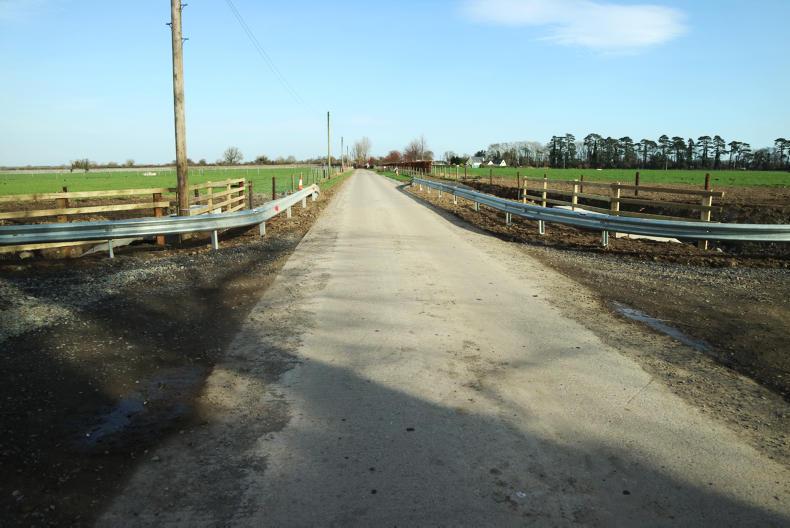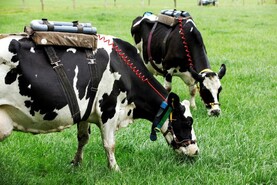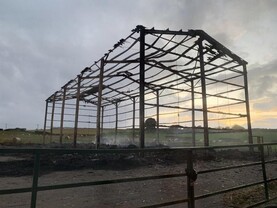An underpass is a substantial investment for any farm, but more and more are being installed on dairy farms to provide access to previously inaccessible blocks for grazing.
UCD Lyons Farm operates a mixed farm with a herd of 200 dairy cows, split into two herds, the dairy systems herd and the commercial/research herd. Additionally a flock of 360 ewes are kept on the farm.
There are a lot of considerations to be made when installing an underpass to ensure animal flow is not impacted.
Both underpasses installed on the farm are viewed as a long term investment and have been two years in the pipeline.
Unlike most farms, the research farm had to go through a public tender process to award the contract for the job.
Planning permission for the project was approved in October 2018, with one underpass installed at the end of December 2018 and the other installed towards the end of January 2019.
Underpass one
One of the underpasses installed on the farm will provide access to a 67ha block across a main road from the main farm. The new block will not only be used for grazing some of the dairy herd, but it will also be used for ewes and lambs.
Safety was a big consideration for the project, according to farm manager Eddie Jordan, “Previously we would have run ewes and lambs down the road to the block across the road, but the amount of people that was needed and in terms of road safety, this wasn’t viable moving forward.”

Animal flow was important when it came to the design of the underpasses. “We went for a 1:10 slope down to and back up out of the underpass to help animal flow. People would generally go with a steeper ramp but we wanted to try and show best practice,” said Eddie.
Cattle and sheep will have a straight entrance and exit from the underpass also, which should aid movement.
Compacted stone is in place on both ramps but they will also be blinded with a finer dust material to help reduce stones being dragged down into the underpass. Roadways either side of the underpass are 3.7m wide.

The underpass itself is made up of nine box culverts. These have an internal height of 2.1m and an internal width of 3.6m. Each culvert is 1.5m long, giving a total length of the box sections of the underpass of 13.5m.
“We could probably have got away with a narrower culvert but we didn’t want it to be a pinch point when it comes to cow flow,” Eddie said. Cow comfort and helping to reduce lameness were seen as important, so the surface of the underpass has Easyfix rubber mats installed throughout.

“We wanted a surface that would last and would be comfortable for cows so even if stones were dragged down into the underpass they would not go up into the cows’ hooves, as can happen if going from stone onto concrete,” Eddie said.
Collection of run-off was a strict condition of the planning permission. A 2m deep tank with 11.3m3 storage was installed at one side of the underpass.
The road was closed at 6pm on a Friday and reopened the following Monday afternoon after being tarred. The road is 5m wide with crash barriers installed on either side.
Underpass two
The second underpass was installed underneath the entrance road to the farm. As there is only one route to the farmyard, there can be a high level of traffic on this road. Only seven culverts were needed for this underpass but there was substantial groundworks required.

“This is a research and a teaching farm, but it is also a commercial farm,” Eddie explained. “We would have high volumes of traffic from students coming in and out this road and we have to try and balance that with a functioning farm.
“Labour has to be looked at too and this will greatly reduce labour when it comes to bringing cows in for milking.”

The road had a concrete surface and this is what was installed again on the surface of the new road. In an ideal world, concrete would be left 28 days to cure. However, in reality this was not an option so 40N concrete along with steel reinforcing was used. Clipex fencing posts were installed along the ramps either side of the underpass. “We were having a problem with cows standing on the roadway and blocking it, which also didn’t help the surface of the road itself,” Eddie explained.

“This should also ensure that we have no cows standing waiting for gates to be open.” Again, crash barriers were installed at either side of the road, above the underpass.
Dancor Civil Engineering from Louth, were the main contractors for the project, and Shay Murtagh supplied the culverts.
The total cost for the project reached a combined €247,000 excluding VAT. The price was evenly split between the two projects, according to Eddie as the smaller installation required additional groundworks.
The culverts themselves came to approximately €100,000 ex VAT. Power cables were installed to both underpasses in case pumps were needed, this came to a cost of €10,000 ex VAT. A road safety audit was also completed for the project, this came at a cost of €6,000 incl VAT.






 This is a subscriber-only article
This is a subscriber-only article









SHARING OPTIONS: